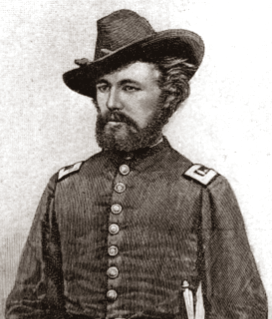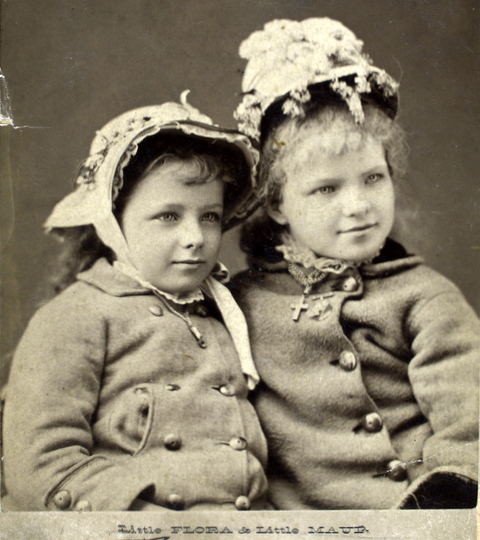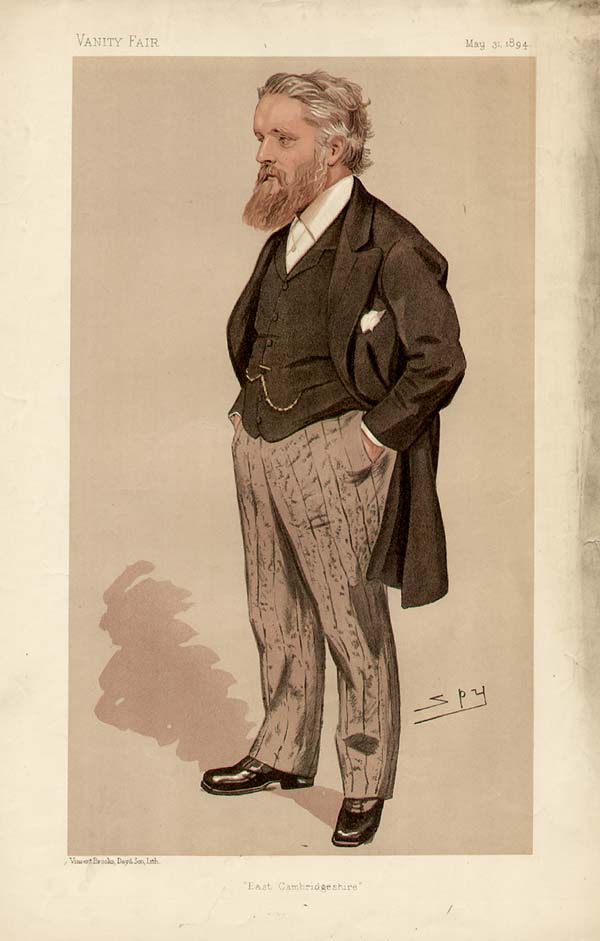|
Sybil Carlisle
Sybil Carlisle (10 February 1871 – 1951) was a British actress born in South Africa who was active in both England and the United States during the 19th and 20th centuries. Early life Carlisle was born on 10 February 1871 in Cape Colony, South Africa, daughter of Mr Carlisle and Mrs M.A. Carlisle Carr, a singing instructor and musician. She was the sister of Lieutenant Carlisle, who gained fame during the Second Boer War, and of painter Mary Helen Carlisle. Her grandfather was General Sir John Bisset. Carlisle's parents had moved to South Africa from England after they got married and before Carlisle was born. After her father died, Carlisle and her mother moved back to England. Her mother remarried and supported her daughter by giving singing lessons. Carlisle appears to have been unwilling to share details of her early life once her stage career started, forgoing any mentions of her origins in early editions of ''Who's Who in the Theatre''. It was only in later editions ... [...More Info...] [...Related Items...] OR: [Wikipedia] [Google] [Baidu] |
Sybil Carlisle
Sybil Carlisle (10 February 1871 – 1951) was a British actress born in South Africa who was active in both England and the United States during the 19th and 20th centuries. Early life Carlisle was born on 10 February 1871 in Cape Colony, South Africa, daughter of Mr Carlisle and Mrs M.A. Carlisle Carr, a singing instructor and musician. She was the sister of Lieutenant Carlisle, who gained fame during the Second Boer War, and of painter Mary Helen Carlisle. Her grandfather was General Sir John Bisset. Carlisle's parents had moved to South Africa from England after they got married and before Carlisle was born. After her father died, Carlisle and her mother moved back to England. Her mother remarried and supported her daughter by giving singing lessons. Carlisle appears to have been unwilling to share details of her early life once her stage career started, forgoing any mentions of her origins in early editions of ''Who's Who in the Theatre''. It was only in later editions ... [...More Info...] [...Related Items...] OR: [Wikipedia] [Google] [Baidu] |
Charles Wyndham (actor)
Sir Charles Wyndham (23 March 1837 – 12 January 1919), ''né'' Charles Culverwell, was an English actor and theatre proprietor. Wyndham's Theatre in London is named after him, and he also built the Noël Coward Theatre, New Theatre (now the Noël Coward Theatre) nearby. Wyndham's family intended him for a medical career, and he studied medicine while enthusiastically engaging in amateur theatricals in his spare time. Torn between medicine and the stage, he spent three years in the US as a surgeon in the Union army in the American Civil War and on two occasions acted unsuccessfully on the New York stage. After returning to Britain and establishing himself as an actor he made further trips to the US between 1882 and 1910, playing in theatres all around the country. In London, Wyndham became known for his comic skills, both in light comedy and farce. He took over the management of the Criterion Theatre in 1876 and remained in charge there for more than 20 years. "Criterion fa ... [...More Info...] [...Related Items...] OR: [Wikipedia] [Google] [Baidu] |
Maude Adams
Maude Ewing Adams Kiskadden (November 11, 1872 – July 17, 1953), known professionally as Maude Adams, was an American actress who achieved her greatest success as the character Peter Pan, first playing the role in the 1905 Broadway production of ''Peter Pan; or, The Boy Who Wouldn't Grow Up''. Adams's personality appealed to a large audience and helped her become the most successful and highest-paid performer of her day, with a yearly income of more than one million dollars during her peak. Adams began performing as a child while accompanying her actress mother on tour. At age 16, she made her Broadway debut, and under Charles Frohman's management, she became a popular player alongside leading man John Drew Jr. in the early 1890s. Beginning in 1897, Adams starred in plays by J. M. Barrie, including ''The Little Minister'', '' Quality Street'', '' What Every Woman Knows'' and ''Peter Pan''. These productions made Adams the most popular actress in America. She also performed in ... [...More Info...] [...Related Items...] OR: [Wikipedia] [Google] [Baidu] |
Garrick Theatre
The Garrick Theatre is a West End theatre, located in Charing Cross Road, in the City of Westminster, named after the stage actor David Garrick. It opened in 1889 with ''The Profligate'', a play by Arthur Wing Pinero, and another Pinero play, '' The Notorious Mrs. Ebbsmith'', was an early success at the theatre. In its early years, the Garrick appears to have specialised in the performance of melodrama. The theatre later became associated with comedies, including ''No Sex Please, We're British'', which played for four years from 1982 to 1986. History There was previously another theatre that was sometimes called the Garrick in London, in Leman Street, opened in 1831 and demolished in 1881.Allingham, Philip V"Theatres in Victorian London" The Victorian Web, 29 November 2015 The new Garrick Theatre was financed in 1889 by the playwright W. S. Gilbert, the author of over 75 plays, including the Gilbert and Sullivan comic operas. It was designed by Walter Emden, with C. J. P ... [...More Info...] [...Related Items...] OR: [Wikipedia] [Google] [Baidu] |
George Edwardes
George Joseph Edwardes (né Edwards; 8 October 1855 – 4 October 1915) was an English theatre manager and producer of Irish ancestry who brought a new era in musical theatre to the British stage and beyond. Edwardes started out in theatre management, soon working at a number of West End theatres. By the age of 20, he was managing theatres for Richard D'Oyly Carte. In 1885, Edwardes became a manager at the Gaiety Theatre with John Hollingshead, who soon retired. For the next three decades, Edwardes ruled a theatrical empire including the Gaiety, Daly's Theatre, the Adelphi Theatre and others, and sent touring companies around Britain and abroad. In the early 1890s, Edwardes recognised the changing tastes of musical theatre audiences and led the movement away from burlesque and comic opera to Edwardian musical comedy. Life and career Edwardes was born at Great Grimsby, Lincolnshire, England. He was the eldest of four sons and three daughters of James Edwards, comptroller of c ... [...More Info...] [...Related Items...] OR: [Wikipedia] [Google] [Baidu] |
A Midsummer Night's Dream
''A Midsummer Night's Dream'' is a comedy written by William Shakespeare 1595 or 1596. The play is set in Athens, and consists of several subplots that revolve around the marriage of Theseus and Hippolyta. One subplot involves a conflict among four Athenian lovers. Another follows a group of six amateur actors rehearsing the play which they are to perform before the wedding. Both groups find themselves in a forest inhabited by fairies who manipulate the humans and are engaged in their own domestic intrigue. The play is one of Shakespeare's most popular and is widely performed. Characters * Theseus—Duke of Athens * Hippolyta—Queen of the Amazons * Egeus—father of Hermia * Hermia—daughter of Egeus, in love with Lysander * Lysander—in love with Hermia * Demetrius—suitor to Hermia * Helena—in love with Demetrius * Philostrate—Master of the Revels * Peter Quince—a carpenter * Nick Bottom—a weaver * Francis Flute—a bellows-mender * Tom Snout—a tinker * ... [...More Info...] [...Related Items...] OR: [Wikipedia] [Google] [Baidu] |
The Two Gentlemen Of Verona
''The Two Gentlemen of Verona'' is a comedy by William Shakespeare, believed to have been written between 1589 and 1593. It is considered by some to be Shakespeare's first play, and is often seen as showing his first tentative steps in laying out some of the themes and motifs with which he would later deal in more detail; for example, it is the first of his plays in which a heroine dresses as a boy. The play deals with the themes of friendship and infidelity, the conflict between friendship and love, and the foolish behaviour of people in love. The highlight of the play is considered by some to be Launce, the clownish servant of Proteus, and his dog Crab, to whom "the most scene-stealing non-speaking role in the canon" has been attributed. ''Two Gentlemen'' is often regarded as one of Shakespeare's weakest plays. It has the smallest named cast of any play by Shakespeare. Characters * Valentine – young man living in Verona * Proteus – his closest friend * Silvia – falls ... [...More Info...] [...Related Items...] OR: [Wikipedia] [Google] [Baidu] |
The School For Scandal
''The School for Scandal'' is a comedy of manners written by Richard Brinsley Sheridan. It was first performed in London at Drury Lane Theatre on 8 May 1777. Plot Act I Scene I: Lady Sneerwell, a wealthy young widow, and her hireling Snake discuss her various scandal-spreading plots. Snake asks why she is so involved in the affairs of Sir Peter Teazle, his ward Maria, and Charles and Joseph Surface, two young men under Sir Peter's informal guardianship, and why she has not yielded to the attentions of Joseph, who is highly respectable. Lady Sneerwell confides that Joseph wants Maria, who is an heiress, and that Maria wants Charles. Thus she and Joseph are plotting to alienate Maria from Charles by putting out rumours of an affair between Charles and Sir Peter's new young wife, Lady Teazle. Joseph arrives to confer with Lady Sneerwell. Maria herself then enters, fleeing the attentions of Sir Benjamin Backbite and his uncle, Crabtree. Mrs. Candour enters and ironically talks ... [...More Info...] [...Related Items...] OR: [Wikipedia] [Google] [Baidu] |
George Newnes
Sir George Newnes, 1st Baronet (13 March 1851 – 9 June 1910) was a British publisher and editor and a founding figure in popular journalism. Newnes also served as a Liberal Party Member of Parliament for two decades. His company, George Newnes Ltd, was known for such periodicals as ''Tit-Bits'' and ''The Strand Magazine''; it continued publishing ground-breaking consumer magazines such as '' Nova'' long after his death. Background and education His father, Thomas Mold Newnes, was a Congregational church minister at the Glenorchy Chapel, Matlock. George Newnes was born in Matlock Bath, Derbyshire, and educated at Silcoates School and then at Shireland Hall, Warwickshire, and the City of London School. In 1875, he married Priscilla Hillyard. They had two sons; the eldest died at age eight (his death was said to have devastated his father),A. J. A. Morris, 'Sir George Newnes', ''Oxford Dictionary of National Biography'', OUP 2004–11 and Frank Newnes (born 1876). Career In 1 ... [...More Info...] [...Related Items...] OR: [Wikipedia] [Google] [Baidu] |
The Outlook (British Magazine)
''The Outlook'' (sometimes just ''Outlook'') was a British weekly periodical, sometimes described as a "review" and sometimes as a "political magazine". The strapline ran on from the title, thus ''The Outlook: In Politics, Life, Letters, and the Arts''. It has been described as the successor to the avant-garde ''New Review'', which had been established in 1889 by W. E. Henley and published works by writers such as Joseph Conrad, Henry James and H. G. Wells before closing in December 1897 due to low circulation figures. Following the resignation of Henley as editor of the ''New Review'' in 1897, ''Outlook'' was launched in February 1898 by George Wyndham, who had been involved in Henley's publication. Wyndham installed Percy Hurd as editor of the new magazine. Conrad was engaged as a contributor from the outset and contributed until 1906. He described it at the time of launch: There were contemporary claims that it was financed by Cecil Rhodes, with whom Wyndham had a close relat ... [...More Info...] [...Related Items...] OR: [Wikipedia] [Google] [Baidu] |
Augustin Daly
John Augustin Daly (July 20, 1838June 7, 1899) was one of the most influential men in American theatre during his lifetime. Drama critic, theatre manager, playwright, and adapter, he became the first recognized stage director in America. He exercised a fierce and tyrannical control over all aspects of his productions. His rules of conduct for actors and actresses imposed heavy fines for late appearances and forgotten lines and earned him the title "the autocrat of the stage." He formed a permanent company in New York and opened Daly's Theatre in New York in 1879 and a second one in London in 1893. Biography Augustin Daly was born in Plymouth, North Carolina to Captain Denis Daly, a sea-captain and ship owner, and Elizabeth, daughter of Lieutenant John Duffy of the British Army. He was educated at Norfolk, Virginia, and in the public schools of New York City. His mother, early left a widow, brought her two boys to New York City, where they soon became frequent attendants at the th ... [...More Info...] [...Related Items...] OR: [Wikipedia] [Google] [Baidu] |
Terry's Theatre
Terry's Theatre was a West End theatre in the Strand, in the City of Westminster, London. Built in 1887, it became a cinema in 1910 before being demolished in 1923. History The theatre was built in 1887, near Fountain's Court, on the site of a former public house, the Old Coal Hole, and was designed by Walter Emden for the publican, Charles Wilmot and a Dr Web. The theatre was built to accommodate 800, seated in pit and stalls, balcony and a dress circle. Fountain's Court was named for 'Fountain's Tavern', where the Fountain Club met – formed by Robert Walpole's political opponents. In 1826, Edmund Kean, the actor, founded a late supper club here, known as the 'Wolf Club' for carousing. It ran until the 1850s, introducing entertainments similar to Evans Music-and-Supper Rooms, in nearby Covent Garden. Edward Terry, as owner-manager, opened the theatre on 17 October 1887, with the farce ''The Churchwarden'', followed by ''The Woman Hater''. Terry had been the leading come ... [...More Info...] [...Related Items...] OR: [Wikipedia] [Google] [Baidu] |





.jpg)


.jpg)